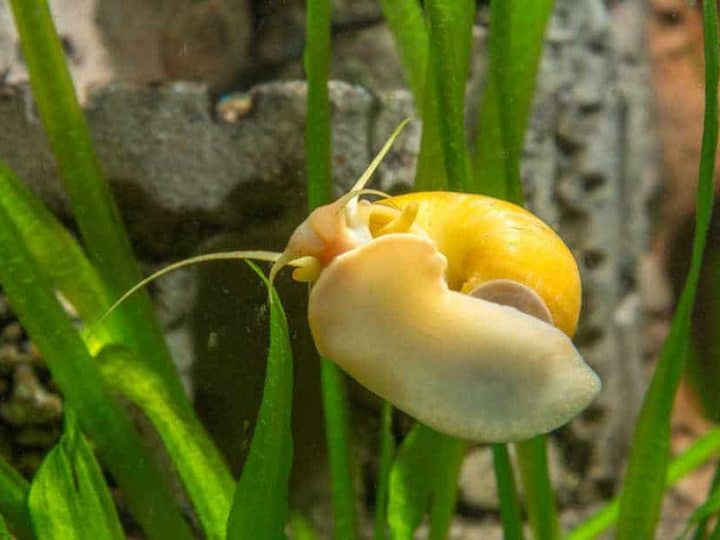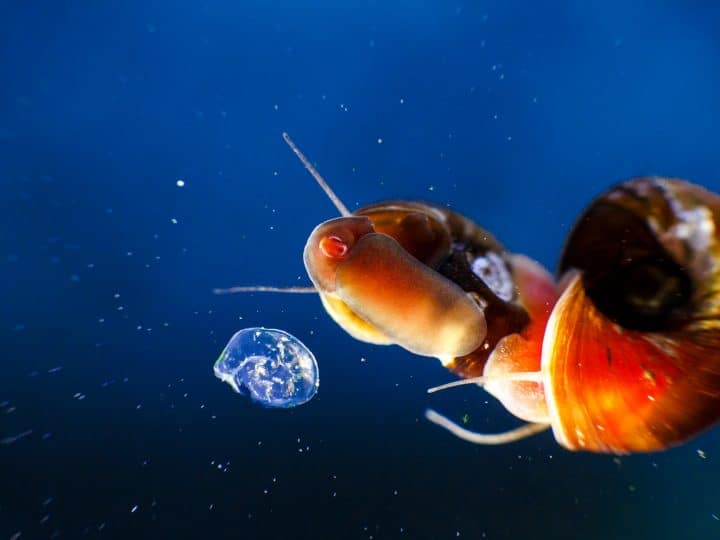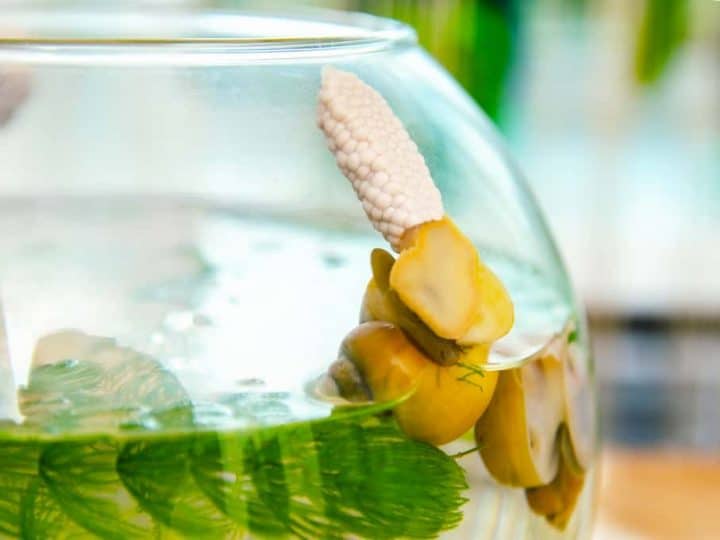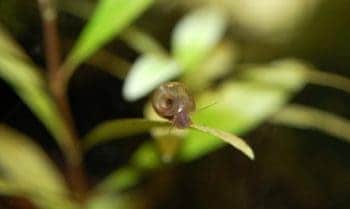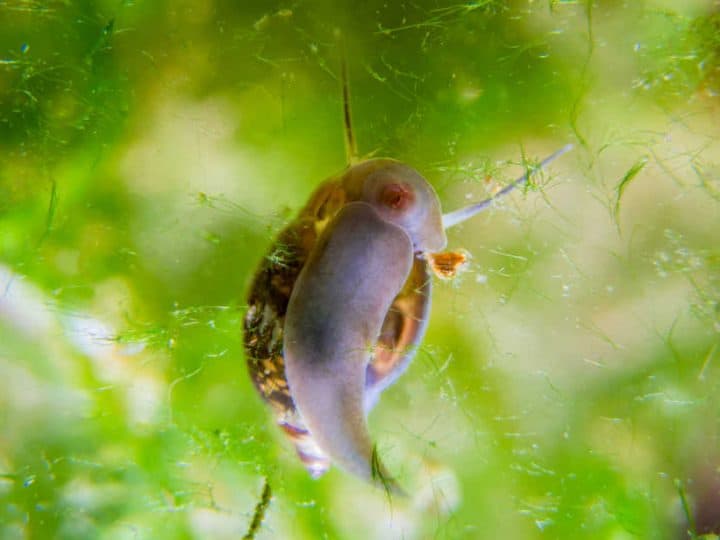Snails are a great addition to any home aquarium and can provide several benefits to the cleanliness of the tank. They also don’t cause too many problems in a tank and are barely even noticeable!
Quick Answer
Snails do keep a fish tank clean. You will want to ensure you add the right type of snail to your tank to get the job done efficiently. Snails will remove algae, decaying plants, dead fish that you may have missed, fish waste, and more from your tank. You can also have multiple snails in your tank.
Keeping your tanks clean is easy with the help of a few snails. With a little knowledge of what types of snails to have and how to care for them, you are well on your way to having a cleaner tank.
Types of Snails to Add to Your Aquarium
As mentioned, there are a few different types of snails that you can add to your tank to get it a bit cleaner. These include apple snails, trumpet snails, and nerite snails.
Apple Snails
Apple snails are commonly found in home aquariums due to their docile and helpful nature. They do not harm other species such as shrimp or fish, nor do they tend to go after plants. If you notice that they are nibbling on your plant life, you can eat algae wafers to your tank for them to snack on.
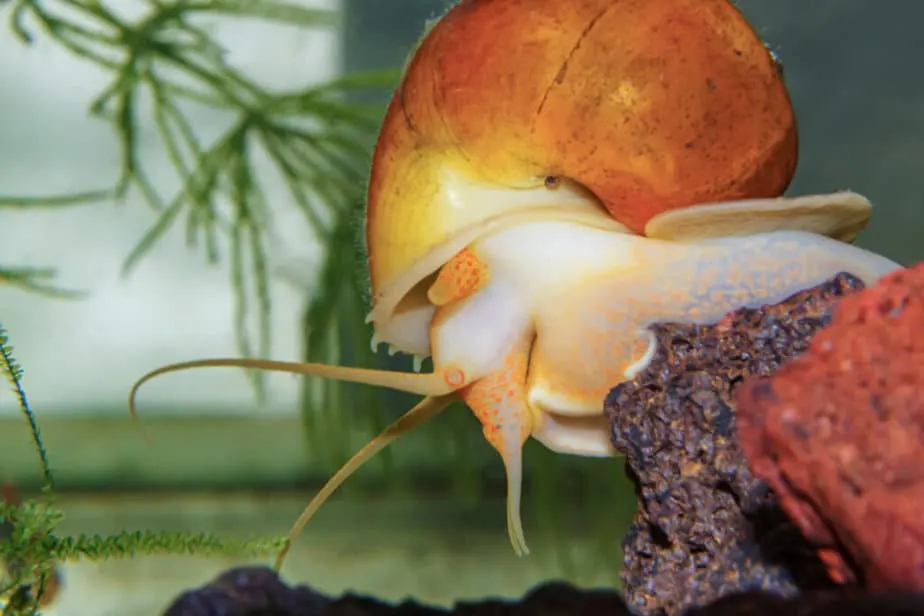
With that being said, they are perfect for eating algae off the tank walls and decorations, among other waste. Apple snails are also commonly called “mystery snails”. They come in a variety of colors suitable for any tank. They do have a few tank parameter needs to follow:
- Temperature: Between 70°F – 80°F
- pH: Between 6.5-8pH
- Water Hardness: 6-12dH
These snails are pretty adaptable but again these numbers should be followed as closely as possible. On top of this, it is important to do weekly parameter checks because snails are extremely sensitive to ammonia and nitrate, as are other fish.
Also, the warmer you keep your tank the faster these snails will spawn. They also reach about an inch long. With that being said, you may want to be careful with how many snails are in your tank so it does not get overpopulated. A maximum of 3 is recommended for a 10-gallon tank.
Malaysian Trumpet Snails
Malaysian trumpet snails are another variety of snail that can be great for keeping your home aquarium clean. They can be found in almost every pet store and for good reason. They have great appetites! This is perfect for removing any debris from a tank.
While the Malaysian trumpet snail can be found easily, they do by several different names as well including Malaysian Burrowing Snails, Live Bearing Snails, or trumpets. They can also live in a range of aquatic environments.
For instance, one snail can live in a tank as small as 5 gallons, and you can a few in larger tanks! Just keep in mind that while they are great cleaners, they can also spawn quickly. You will always want to keep your numbers in check to ensure there is not an overpopulation without enough food.
Malaysian trumpet snails are very easy to care for and need little to help with surviving. With that being said there are a few water parameters to always keep in check to ensure they thrive.
- Temperature: 70-78°F
- pH: Between 7.0-7.5pH
- Water Hardness: 7dH
These parameters are a guideline and it does help that these snails are very hardy should anything go wrong. You will find them all over your decorations and actively eating everything in sight! If you want to decrease their spawning, you can give less food as well.
Nerite Snails
Nerite snails are extremely popular when it comes to freshwater (and saltwater) tanks. They are fantastic cleaners and are the top breed of snail to have. They are also docile and won’t have any other beings in your tank, along with live plants.
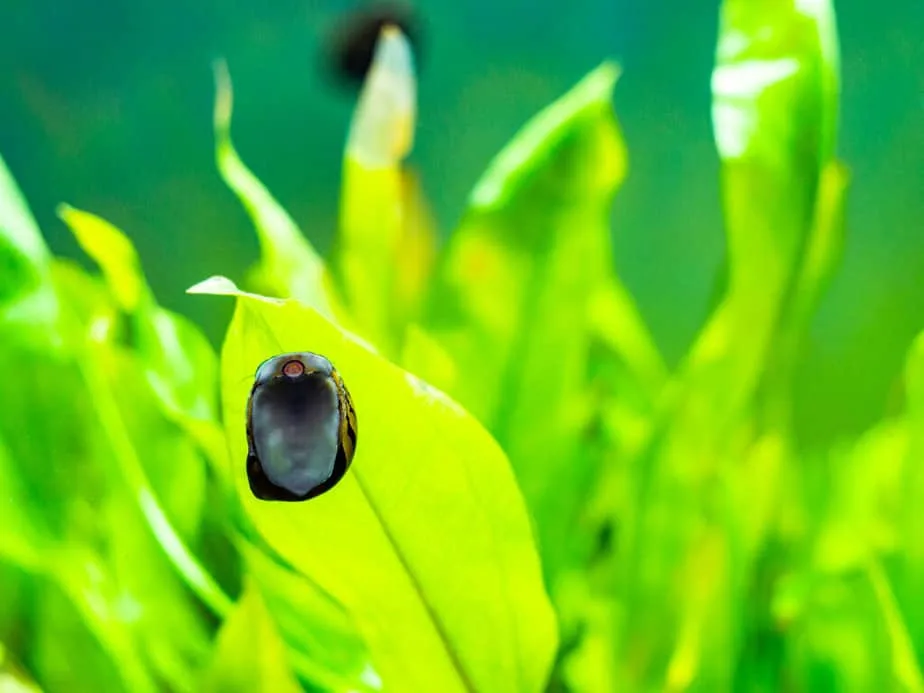
Nerite snails absolutely love algae so if you find that your tank gets filled with algae quickly, adding these snails is a great option. There are also a ton of varieties when it comes to nerite snails that have different colors based on your preference. A few are:
- Zebra Nerite Snails
- Tiger Nerite Snails
- Olive Nerite Snails
- Black Racer Nerite Snails
- Marble Nerite Snails
All varieties of the nerite snail are typically easy to care for, but again, do have a few water parameters to keep in check.
- Temperature: 72-78°F
- pH: 7.5pH
- Water Hardness:6-12dH
Nerite snails are sensitive to water quality so it is important that you keep up with partial water changes to keep the tank as clean as possible. On the contrary to other aquarium snails, nerite snails will not reproduce in freshwater. In order to reproduce, they actually need brackish water. So an overpopulation of snails is unlikely.
You also want to make sure that you keep up with your parameters because while hardy, they can go into shock with a fast temperature change or too much ammonia.
What Do Snails Eat?
As mentioned, all of the above snails are impeccable cleaners for your home aquarium. They will eat algae, dead plants while staying away from the live ones, dead fish, and any extra fish food and waste at the bottom of your tank. With that being said, there is no need to add any extra food for your snails.
However, there is one exception to this. Nerite snails are algae obsessed! If you have a pretty clean tank without algae problems, you will want to add algae wafers to the bottom of the tank. This will ensure your snails are getting the nutrients they need if there is not enough algae present in the tank.
Remember, algae comes from excessive light and not waste. If you notice you have a large amount of algae you will want to get to the root of the problem to ensure your tank stays healthy.
Looking for more information on aquarium fish?
In that case, make sure to check out our aquatic fish page. There you’ll find everything you need to know about aquarium fish, shrimp & snails.
Steps After a Snail Dies
While snails are great for aquariums, they unfortunately do not live very long. With that being said it is important to notice when your snail has died, or if it is just being inactive. It is not uncommon for a snail to be inactive for several days.
If you suspect that your snail may have died, you will want to remove it from the tank right away to ensure the safety of other fish in the tank from disease. This will also give you a chance to inspect the snail.
If the snail has indeed passed away, you may notice a pungent smell coming off of the snail. Another thing to check is if the body is hanging out of the shell. If so, your snail has passed.
You can also check the heartbeat of the snail. Note that this is only possible if the snail has a thin shell or is on the younger side. You will want to take a flashlight to the shell and look for a slight heartbeat. If one is not found, then your snail may be dead.
Another sign of a snail that has passed away is if it is floating on the top of the tank. This means air got into the lungs. One final way to check if your snail has passed is to remove it from the tak and place it in a Ziploc bag with water. If you notice the snail moving then you can place it back in the tank.

